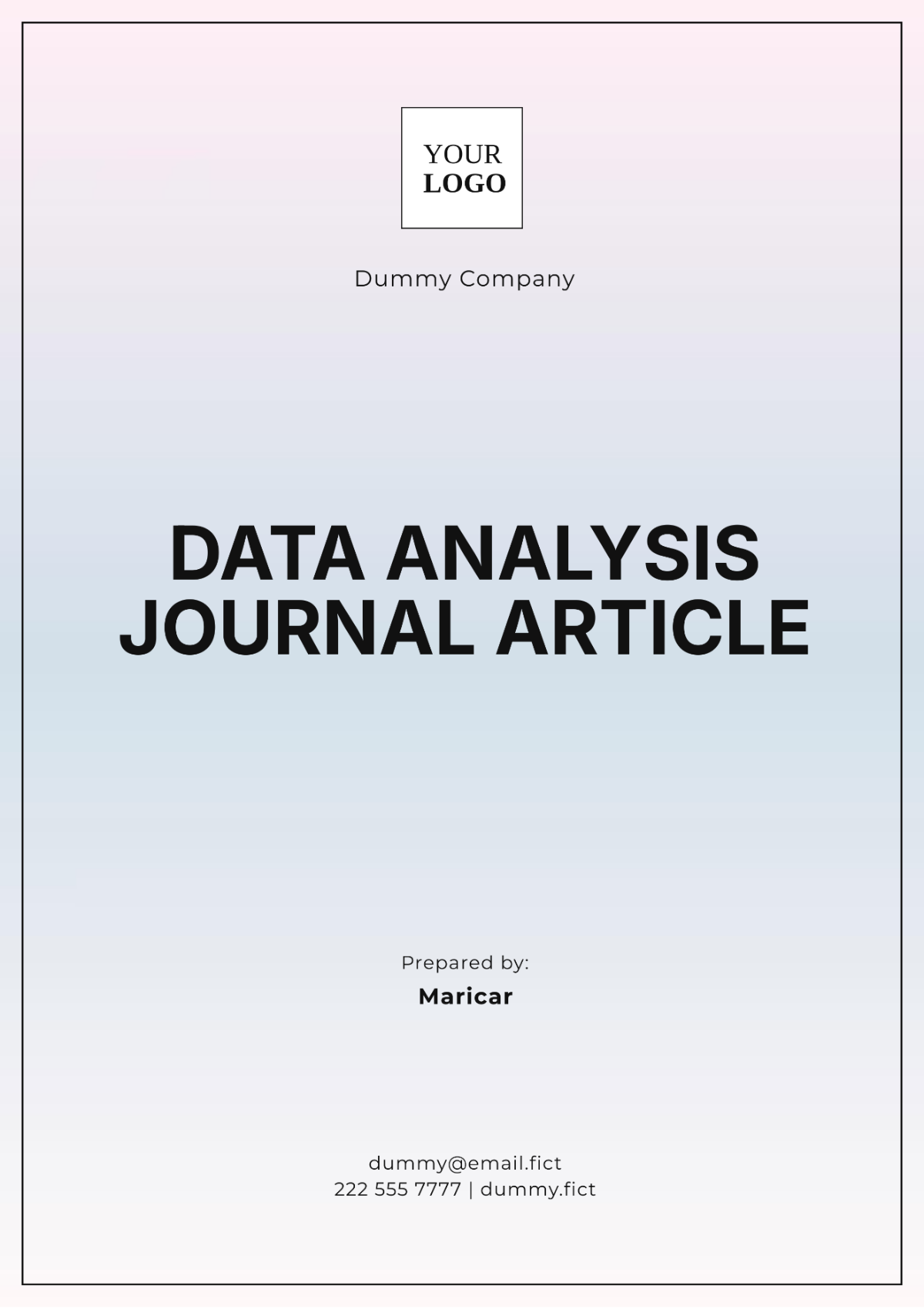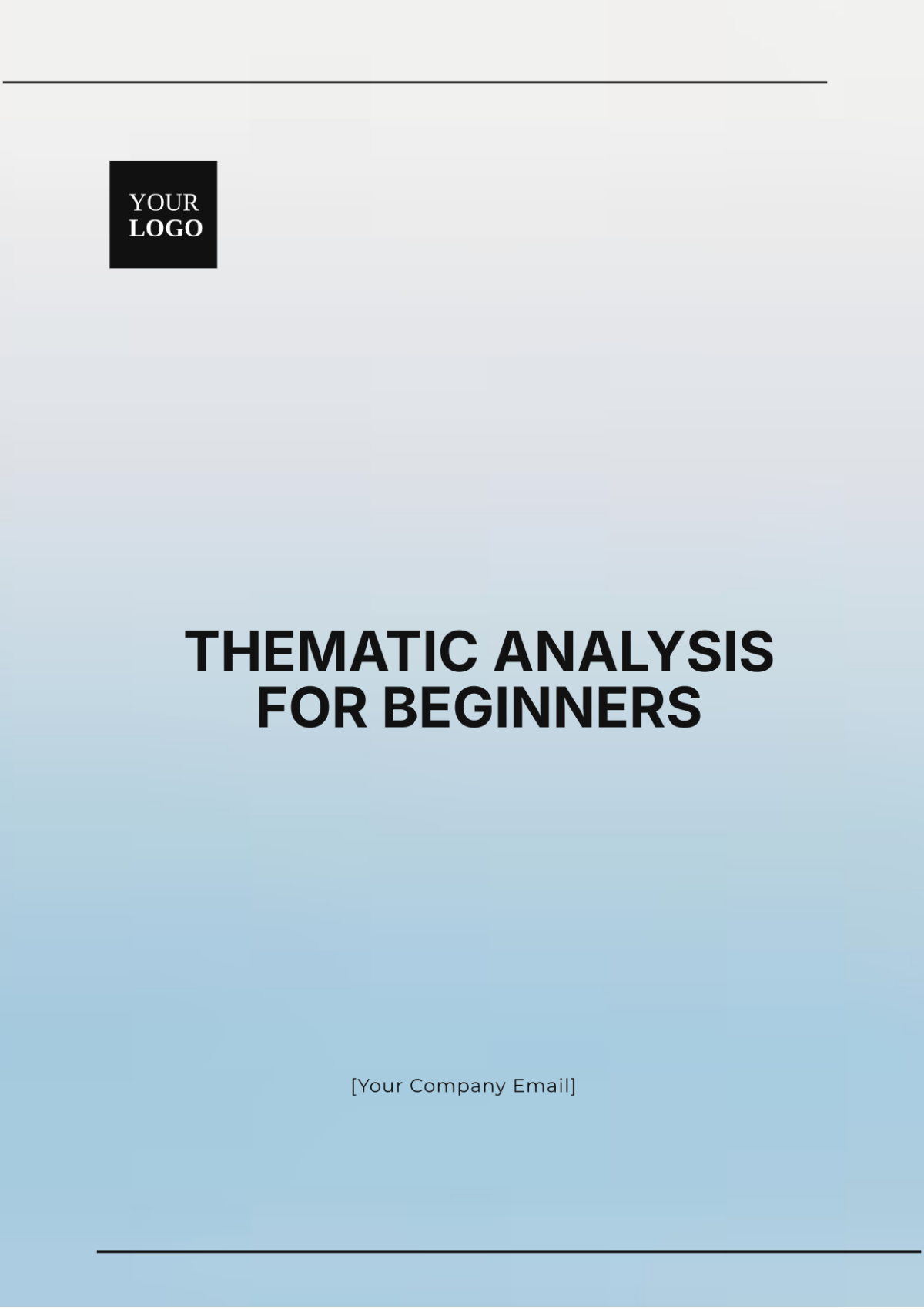Thematic Analysis for Business Research
Prepared By: [Your Name]
Company: [Your Company Name]
1. Introduction
Thematic analysis is a qualitative research method that involves identifying, analyzing, and reporting patterns (themes) within qualitative data. This approach helps in understanding underlying trends and insights by systematically examining data from various sources such as interview transcripts, focus group discussions, or open-ended survey responses. By distilling complex qualitative data into key themes, businesses can gain actionable insights that inform strategic decisions and improve organizational practices.
2. Methodology
2.1 Data Collection
For this thematic analysis, data was collected from three primary sources:
Interviews: Conducted with 20 participants, including customers and industry experts, to gather in-depth insights into user experiences and industry perspectives.
Focus Groups: Held with 5 groups of 8 participants each, including customers and employees, to explore collective opinions and identify common themes.
Open-Ended Surveys: Distributed to 100 respondents to collect detailed feedback on product experiences and market trends.
2.2 Data Analysis
The data analysis followed these steps:
Familiarization with Data: All interview transcripts, focus group recordings, and survey responses were reviewed to gain an understanding of the content.
Generating Initial Codes: Key features and significant statements were coded using qualitative analysis software. For example, codes such as “user satisfaction,” “product issues,” and “market demand” were generated.
Searching for Themes: Codes were grouped into potential themes based on patterns and relationships. Themes such as “Customer Preferences,” “Pain Points,” and “Market Trends” emerged.
Reviewing Themes: Themes were refined by comparing them against the data to ensure their relevance and coherence. Themes were adjusted to better fit the data, resulting in refined categories such as “Emerging Trends” and “Employee Feedback.”
Defining and Naming Themes: Each theme was clearly defined and named to reflect its content. For instance, “Customer Preferences” was defined as insights into what customers value in products.
Writing the Report: Findings were structured into a comprehensive report, highlighting key themes and their implications for business strategies.
3. Findings
The following table summarizes the key themes identified in the analysis, along with specific examples illustrating each theme:
Theme | Description |
|---|---|
Customer Preferences | Insights into customer desires, such as a preference for eco-friendly and customizable products. For example, data revealed a significant demand for sustainable products, with 65% of survey respondents indicating a preference for eco-friendly materials. |
Pain Points | Common issues faced by users, such as difficulties with product usability and customer service delays. Focus group discussions highlighted common issues with product installation, with 40% of participants reporting difficulties. |
Market Trends | Emerging shifts in market behavior, including a growing demand for digital solutions and remote work tools. Interviews with industry experts indicated a shift towards remote work, with 70% of experts predicting an increase in remote work tools. |
Employee Feedback | Factors influencing employee satisfaction, such as the need for better work-life balance and flexible hours. Survey responses indicated that 55% of employees felt more engaged when offered flexible working hours. |
4. Discussion
4.1 Interpretation of Findings
The thematic analysis provides a clear picture of underlying trends and issues. Customer preferences for eco-friendly products suggest that businesses should focus on sustainability to meet market demands. The identified pain points in product usability indicate areas for improvement in product design and support. Market trends show a growing interest in digital solutions, signaling opportunities for innovation. Employee feedback highlights the importance of flexible work arrangements for boosting morale and productivity.
4.2 Implications
Strategic Planning: Businesses should incorporate sustainability into their product offerings and consider investing in remote work solutions to align with market trends.
Product Development: Addressing identified pain points can enhance product usability and customer satisfaction, leading to improved user experiences.
Marketing Strategies: Targeted marketing campaigns can be developed to emphasize eco-friendly features and digital solutions, appealing to the current market demand.
5. Recommendations
Based on the findings, the following recommendations are proposed:
Enhance Product Features: Improve product design to address usability issues and incorporate sustainable materials based on customer preferences.
Focus on Emerging Trends: Develop and market digital solutions that cater to the increasing demand for remote work tools and innovative technologies.
Invest in Employee Satisfaction: Implement flexible work policies and other measures to enhance employee engagement and productivity.
6. Conclusion
Thematic analysis is a valuable tool for uncovering and understanding patterns within qualitative data. By systematically examining data from interviews, focus groups, and surveys, researchers can identify key themes that provide actionable insights. These insights are crucial for informing business strategies, enhancing product development, and improving organizational practices.

















































